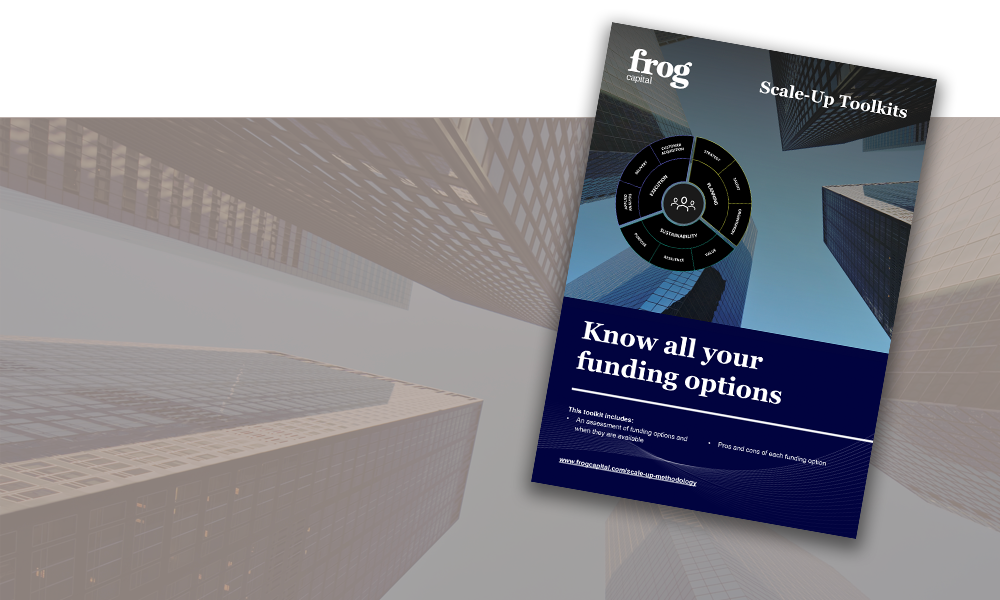Knowing all your funding options is an essential part of maximising your chances (and minimising the cost) of your scale-up journey. The attached toolkit includes a simple assessment of the options and when they are available, as well as a summary of the pros and cons of each.
Below is an outline of each funding option, including more in-depth details on their pros and cons.
Early-Stage Venture Debt
The minimum venture criteria are:
- A proven business model
- £1m in revenue: a credible equity funding proposition would also be ideal, although profitability is not a requirement
Venture debt is a good option to extend runway with less dilution than equity, but it must be carefully assessed to ensure that the total cash impact is properly assessed (unlike equity it will amortise). The full cost should be taken into account including warrants or terminal bonus.
No market formula exists for the venture debt amount that is appropriate.
Influential factors will include:
- Growth rate
- Quality of your equity investors
- Balance sheet: equity invested and cash, but not current asset
- Ability to retrench to a lower growth break-even position
A common approach is to tranche the venture debt so that you only pay for what you need. This ensures the provider gets to see performance before increasing exposure. The advantage of this is that, as the IRR cost is circa 18-20%, it is cheaper than equity. However, it is repayable very quickly, is secured on your business and usually requires equity alongside it.
Invoice Discounting and other Asset-Based Lending (ABL)
Invoice discounting is lending against current invoices which are invisible to clients. It differs from factoring in that with factoring the debt is collected by a third party, posing a risk to client relationships.
For some, invoice discounting is a good supplement for short-term working capital peaks alongside venture debt.
Invoice discounting can be an excellent support for growth, but the consensus is that:
- It represents a risk: particularly in the case of a downturn or significant seasonality.
- Customer concentration will make it unlikely.
- Good underlying credit risk of clients is vital.
- They are not sophisticated lenders: meaning you need to conform to a standard risk profile.
In the tech industry, there is little experience of other ABLs but there are interesting products out there like lending against future R&D tax credits or lease deposits and innovation loans.
Later-Stage Venture Debt
Businesses gaining scale and credibility can access venture debt without equity, but they almost certainly will be in a position where they could have raised more equity if they had wished.
Venture debt providers are happy to see businesses outgrow them and then take on cheaper senior debt as part of a capital restructuring exercise. Though both venture debt and venture capital may potentially be taken out as a result, venture debt can sit behind bank debt.
The margin difference between venture debt and bank debt is very high at present due to low bank rates. However, historically it is normally pitched at around 6% to achieve an overall return of close to 10% for more mature businesses. At the early stage, the range might extend up to 20% depending on the risk factors.
Working Capital Facilities
Businesses further along in the scale-up journey have a requirement for increasing maturity in the business funding and take on working capital facilities.
Covenant-light venture debt can be more flexible until businesses get closer to break-even and can enable better predictability around when they should take advantage of the lower cost and improved matching capability that working capital facilities provide.
As with the whole of the scale-up journey, funding requires a continual questioning of whether the current approach is fit for purpose for the journey ahead. At no point should you default into continuing with past behaviour without fully exploring the options available.












